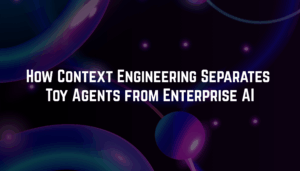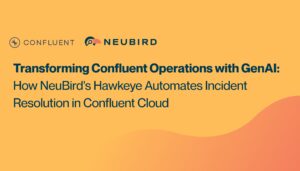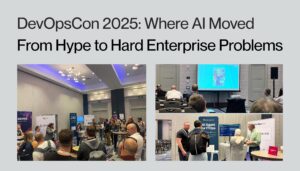CPU Spikes Demystified: How Hawkeye Masters Resource Analysis
How SRE teams are transforming CPU utilization management with AI
A PagerDuty alert breaks the silence: “GreaterThanUpperThreshold” on node CPU utilization. Your Kubernetes cluster is experiencing severe CPU spikes, and although your observability stack is capturing every metric, the root cause remains elusive. With applications spread across dozens of namespaces and hundreds of pods, finding the culprit means correlating data across multiple monitoring systems and timeframes.
The Resource Investigation Reality
In a modern Kubernetes environment, CPU spike investigation isn’t hampered by a lack of data – quite the opposite. Your observability stack provides multiple lenses into the problem:
CloudWatch Container Insights shows node-level CPU metrics spiking to concerning levels. Prometheus captures detailed pod-level resource utilization across your cluster. Your APM solution tracks application performance metrics. Your logging platform collects application logs that might indicate why certain components are consuming more resources than usual.
Yet this wealth of data often makes the investigation more complex rather than simpler. A typical troubleshooting session involves constantly switching between these different tools and mentally correlating their data:
You start in CloudWatch, identifying the affected nodes and the timing of the spikes. Switching to Prometheus, you examine pod-level metrics, trying to match spike patterns with specific workloads. Your APM tool shows increased latency in several services, but is it cause or effect? The logging platform shows increased error rates in some components, but do they align with the CPU spikes?
Each tool tells part of the story, but piecing together the complete narrative requires extensive context switching and complex mental correlation of events across different timelines and granularities.
Why CPU Spikes Challenge Traditional Analysis
What makes CPU spike investigation particularly demanding isn’t just finding the high-CPU workload – it’s understanding the broader context and impact across your entire system. A spike in one component can trigger a cascade of effects:
Increased CPU usage in one pod might cause the Kubernetes scheduler to rebalance workloads across nodes. This rebalancing can trigger further spikes as pods migrate and initialize. Meanwhile, resource contention might cause other services to slow down, leading to retry storms that amplify the problem.
Your observability tools capture all of this activity faithfully, but understanding the sequence of events and cause-effect relationships requires simultaneously analyzing multiple data streams and understanding complex system interactions.
Hawkeye: Bringing Clarity to Resource Analysis
Here’s how Hawkeye transforms this investigation:
The Hawkeye Difference
What sets Hawkeye apart isn’t just its ability to collect metrics faster than humans – it’s how it analyzes data streams in parallel to build a comprehensive understanding of system behavior. While an SRE would need to manually switch between CloudWatch, Prometheus, logging tools, and application metrics to piece together the story, Hawkeye simultaneously processes all these data sources to identify patterns and correlations.
Read more: Resource analysis becomes even more powerful when integrated with your existing monitoring tools. See how Hawkeye works with Grafana to transform Kubernetes operations.
This parallel processing capability allows Hawkeye to quickly identify cause-and-effect relationships that might take hours for humans to discover. By analyzing metrics, logs, events, and application data simultaneously, Hawkeye can trace how a CPU spike in one component ripples through your entire system.
Real World Impact
For teams using Hawkeye, the transformation goes beyond faster incident resolution. Engineers report a fundamental shift in how they approach resource management:
Instead of spending hours correlating data across different observability tools, they can focus on implementing systematic improvements based on Hawkeye’s comprehensive analysis. The mean time to resolution for CPU-related incidents has dramatically decreased, but more importantly, teams can now prevent many issues before they impact production by acting on Hawkeye’s early warnings and recommendations.
Read more: Hawkeye’s intelligence isn’t limited to Kubernetes environments. The same AI capabilities transform VDI monitoring and performance optimization for desktop virtualization teams, applying similar correlation techniques to ControlUp data.
Implementation Journey
Integrating Hawkeye into your Kubernetes environment is straightforward:
- Connect your existing observability tools – Hawkeye enhances rather than replaces your current monitoring stack
- Configure your preferred incident response workflows
- Review Hawkeye’s incident analysis, drill down with questions, and implement recommendations.
Scale your team and improve morale by transforming your approach to application debugging from reactive investigation to proactive improvement. Let Hawkeye handle the complexity of CPU Spike analysis while your team focuses on innovation.
Follow
Hawkeye ![]()
Written by







